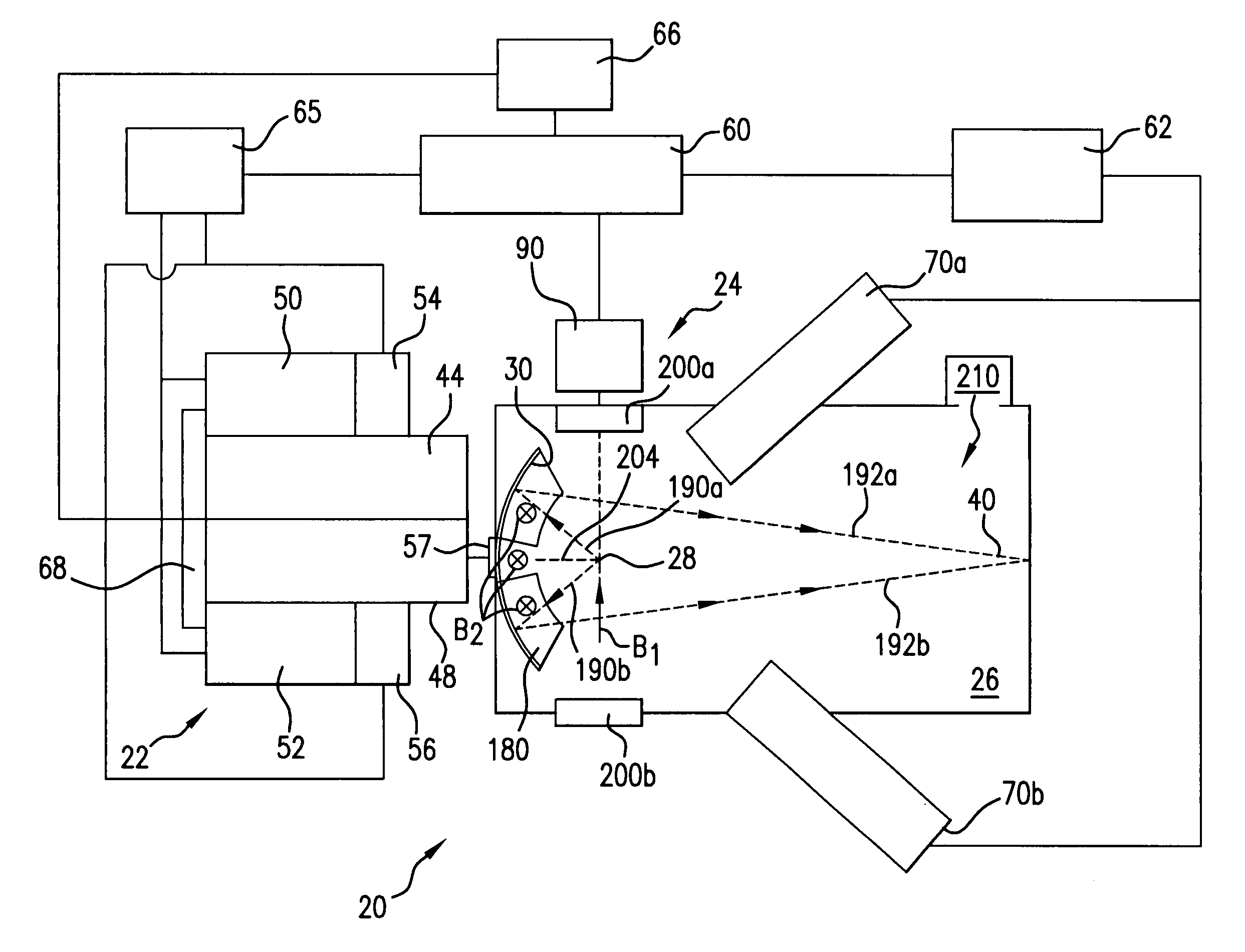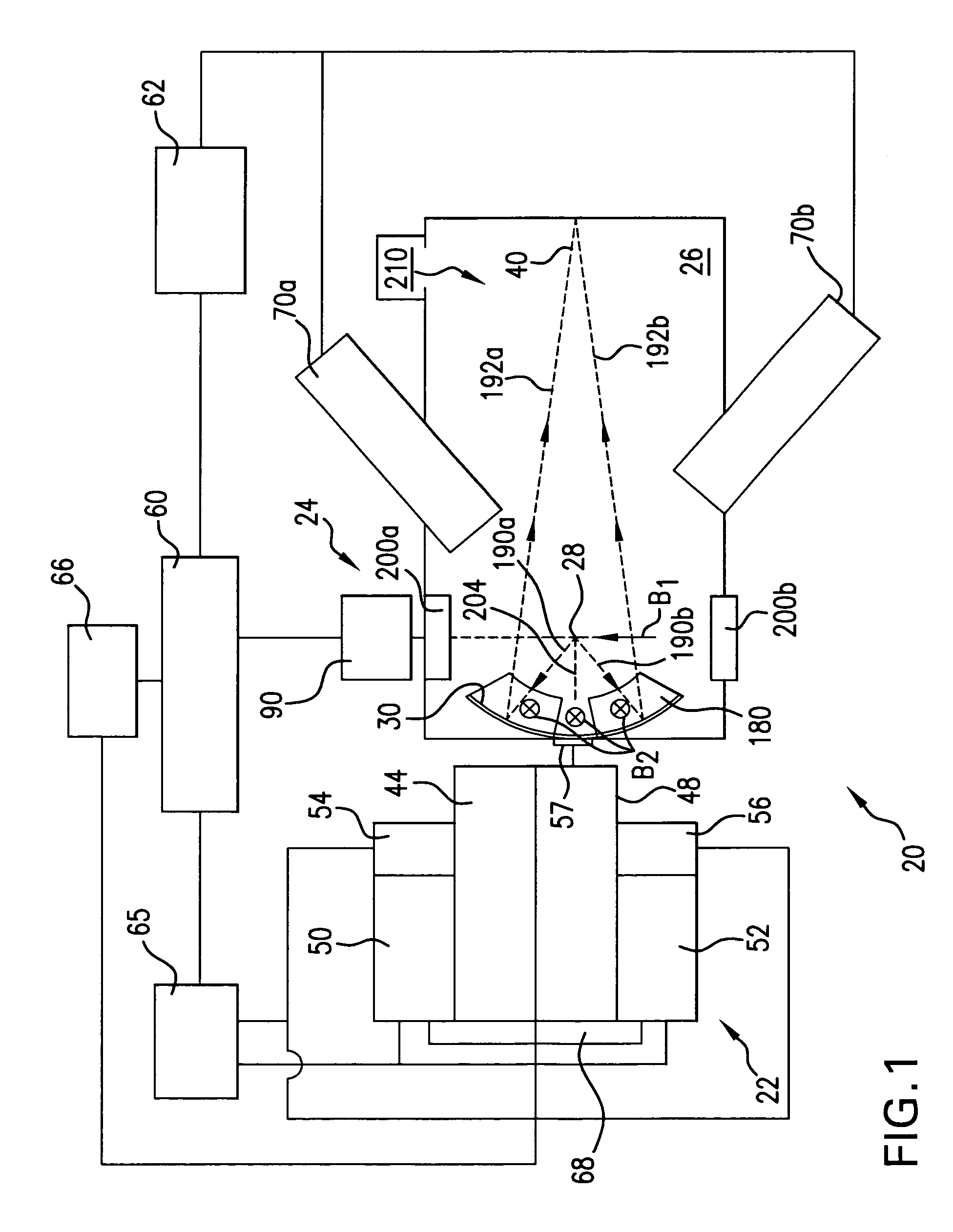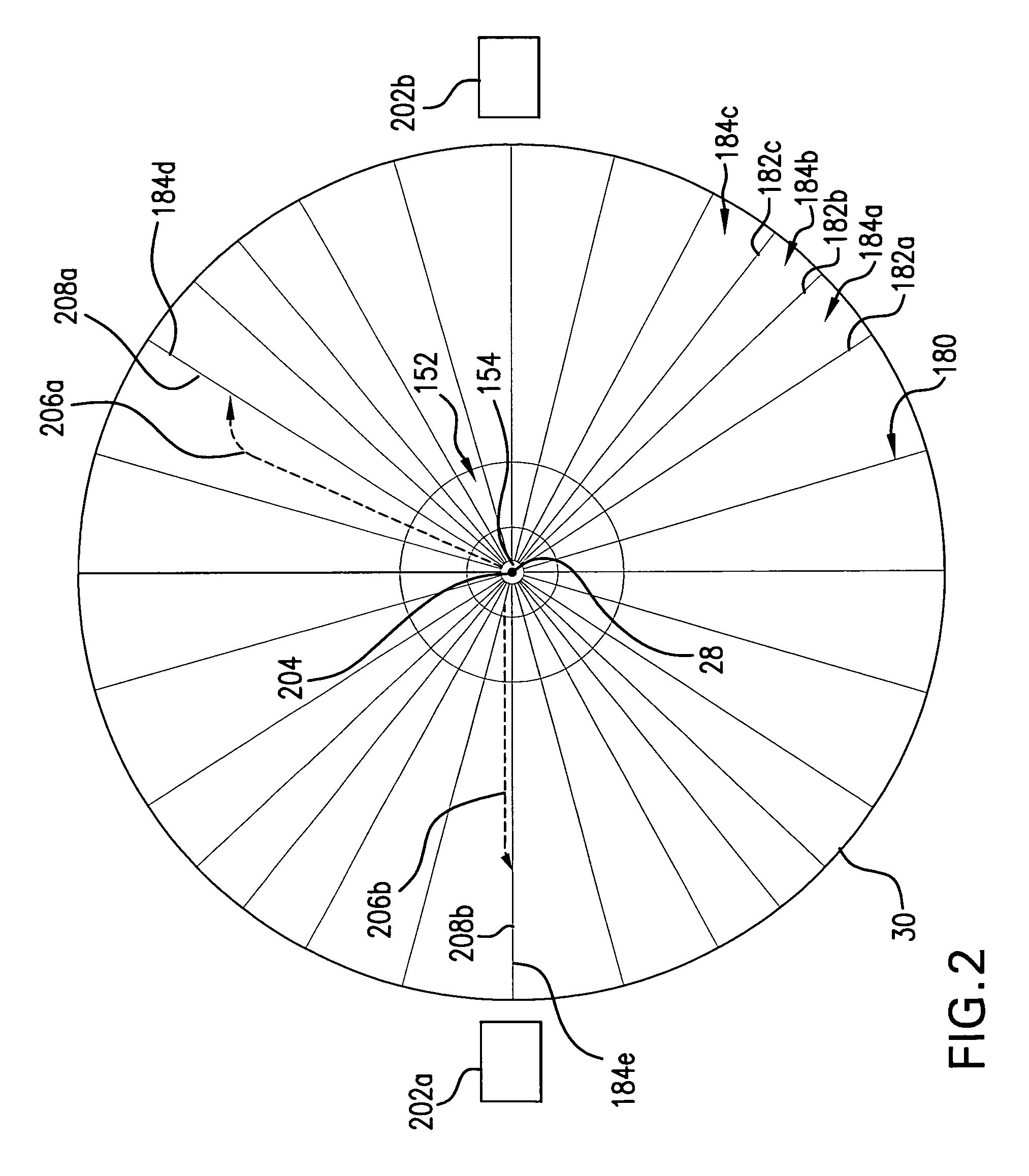Systems and methods for deflecting plasma-generated ions to prevent the ions from reaching an internal component of an EUV light source
a technology of plasma chamber and internal components, applied in the field of extreme ultraviolet (“ euv”) light sources, can solve the problems of reducing the operational efficiency of the various internal components of the plasma chamber, damaging the optical elements of source material debris, and generating undesirable by-products of the plasma process, so as to reduce the energy of ions and deflect the energy of reducing ions
- Summary
- Abstract
- Description
- Claims
- Application Information
AI Technical Summary
Benefits of technology
Problems solved by technology
Method used
Image
Examples
Embodiment Construction
[0018]With initial reference to FIG. 1, there is shown a schematic view of an exemplary production EUV light source, e.g., a laser produced plasma EUV light source 20, according to an aspect of the present invention. Although aspects of the present invention are illustrated with reference to a laser produced plasma (LPP), it is to be appreciated that the present invention is equally applicable to other types of light sources which produce a plasma including an electric discharge produced plasma (“DPP”), a representative construction of which is disclosed in co-owned U.S. Pat. No. 6,815,700, which is hereby incorporated by reference.
[0019]Continuing with FIG. 1, an LPP light source 20 may contain a pulsed laser system 22, e.g., a gas discharge excimer or molecular fluorine laser operating at high power and high pulse repetition rate and may be a MOPA configured laser system, e.g., as shown in U.S. Pat. Nos. 6,625,191, 6,549,551, and 6,567,450. The light source 20 may also include a t...
PUM
| Property | Measurement | Unit |
|---|---|---|
| angle | aaaaa | aaaaa |
| wavelengths | aaaaa | aaaaa |
| wavelength | aaaaa | aaaaa |
Abstract
Description
Claims
Application Information
 Login to View More
Login to View More - R&D
- Intellectual Property
- Life Sciences
- Materials
- Tech Scout
- Unparalleled Data Quality
- Higher Quality Content
- 60% Fewer Hallucinations
Browse by: Latest US Patents, China's latest patents, Technical Efficacy Thesaurus, Application Domain, Technology Topic, Popular Technical Reports.
© 2025 PatSnap. All rights reserved.Legal|Privacy policy|Modern Slavery Act Transparency Statement|Sitemap|About US| Contact US: help@patsnap.com



